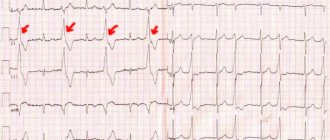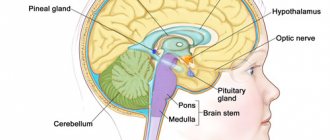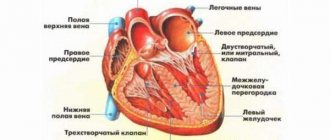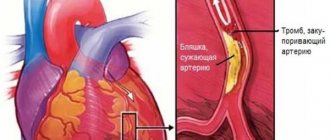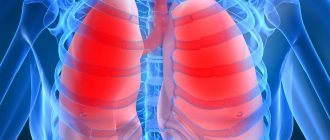Hyperkalemia is a condition that develops as a result of an increase in potassium levels in the blood serum (with its level exceeding 5 mmol/l).
Hyperkalemia is diagnosed in approximately 1-10% of patients presenting to hospitals. However, in recent years its prevalence has been increasing. This is mainly due to the increase in the number of prescriptions to patients of drugs that can affect the RAAS (renin-angiotensin-aldosterone system), the main tasks of which are maintaining systemic blood pressure and normal blood flow in vital organs (liver, heart, kidneys, brain).
Causes of excess potassium in the blood
To fully understand where hyperkalemia comes from, you should understand where potassium comes from in the body, what functions it performs, and how it is eliminated from the body.
Potassium enters the human body through the consumption of food and liquids. Rarely, with a large intake of potassium-containing foods and liquids every day, the human body still maintains normal levels.
To remove an electrolyte such as potassium, the body activates the kidneys, which are controlled by hormones.
They can both influence the rapid elimination of potassium and its retention in the body.
Potassium is concentrated within cells, and is maintained at normal plasma levels.
This indicator does not depend on the body’s water balance, because only two percent of potassium is found outside the cells.
Most of it leaves the body in urine (up to 80 percent), which is why the kidneys play an important role in maintaining normal potassium levels in the body.
The main causes of hyperkalemia are factors associated with the irrational distribution of potassium (in and outside of cells), as well as its accumulation in the body.
With an excess of leukocytes, or increased deformation of platelets and red blood cells, the cells lose potassium. In such a situation, hyperkalemia is assigned the value “false”, since the concentration inside the cells of other tissues of the body does not change.
The most common pathologies in which potassium is released into the space outside the cell are:
- Progression of acidosis, which is a violation of the acid-base balance in the body,
- In case of severe injuries or traumatic shock,
- Chemotherapy for lymphomas (oncological disease of the lymphatic tissue), multiple myeloma and leukemia also has an effect on increasing potassium concentrations.
- Alcohol intoxication,
- The effect of certain medications: cardiac glycosides, depolarizing muscle relaxants (ACE inhibitors, Heparin, Amiloride),
- Excessive physical activity
- Low amount of insulin
- Excessive use of beta blockers
- The kidneys retain potassium (the main cause of hyperkalemia),
- Addison's disease (chronic adrenal insufficiency),
- Genetic disposition.
The leading place among all possible causes of hyperkalemia is problems with kidney function.
Drug-induced hyperkalemia
Medications often cause hyperkalemia, especially in people with renal failure or hypoaldosteronism. Most often, hyperkalemia occurs when medications interfere with potassium excretion. Also, potassium supplementation to correct or prevent hypokalemia may inadvertently lead to hyperkalemia.
According to one study, approximately half of the cases of drug-induced hyperkalemia were due to ACE inhibitors, and approximately 10% of outpatients starting treatment with an ACE inhibitor or angiotensin receptor antagonist experienced hyperkalemia within one year. The incidence of hyperkalemia associated with potassium-sparing diuretics has increased substantially as the addition of spironolactone to standard therapy has been shown to reduce morbidity and mortality in patients with congestive heart failure. When co-prescribing an ACE inhibitor and an angiotensin receptor inhibitor there is a risk of dangerous side effects, including hyperkalemia, therefore this combination is avoided. Other popular drugs that can cause hyperkalemia include trimethoprim, heparin, β-blockers, digoxin, and NSAIDs.
Read also Hypothyroidism - causes, symptoms, diagnosis, treatment
How does hyperkalemia work in the kidneys?
In order to understand what processes occur in the kidneys during hyperkalemia, it should be understood that kidney performance depends on the following factors:
- A quantitative indicator of functional nephrons, which are the smallest elements of the kidney structure and consist of renal tubes and tubules,
- Normal levels of aldosterone, which is a hormone secreted by the adrenal glands,
- It is also important to have a normal fluid intake and a satisfactory amount of sodium in the blood.
The above components control the rate of GF (glomerular filtration rate). An excess of potassium is recorded when the GFR drops below 15 milliliters per minute, or a person’s urine output drops to less than one liter in 24 hours.
Normal glomerular filtration rates are 80-120 milliliters per minute.
A falling GFR is usually a sign of kidney failure, which in turn leads to hyperkalemia. Potassium can also be retained by the hormone renin. This happens because this hormone activates the work of aldosterone, and when it declines in the body, it leads to Addison’s disease.
This can be caused by certain medications (Captopril, Indomethacin). People suffering from diabetes and the elderly are mainly affected.
Renin is also affected by chronic nephritis, sickle cell anemia, direct kidney damage, and diabetes.
Impaired GFR accompanies renal failure, in which tissue death occurs and leads to rapid progression of hyperkalemia.
Prevention
To avoid having to treat this disease, it is better to prevent its occurrence. The following preventive measures will help avoid the development of hyperkalemia:
- special diet;
- refusal of nicotine, alcoholic beverages, drugs;
- regular observation by doctors (for patients with diabetes);
- timely treatment of diseases of the genitourinary system;
- refusal of medications without a doctor’s prescription;
- annual preventive examinations of the body in the clinic.
Symptoms of hyperkalemia
The main symptom accompanying hyperkalemia is general muscle weakness. But there are other symptoms that may indicate progression of the disease.
Among them:
- Reluctance to work, apathy,
- Weakened tendons
- Neuromuscular system disorders, paralysis. As hyperkalemia progresses to a severe degree, paralysis may occur, even such as paralysis of the respiratory muscles and paralysis of the diaphragm, which will lead to a failure in the respiratory system,
- Nausea, lack of appetite,
- Low mobility
- Decline in blood pressure,
- Malfunctions of the heart. Changes in cell polarization may lead to decreased excitability of cells in the myocardium. This will make it more difficult for a nerve impulse to enter the heart, which will lead to heart pathologies,
- An increased concentration of potassium can cause deviations in heart rhythm, including sinoarterial blockade, scar formations on the walls of the ventricles (fibrillation), as well as asystole (cessation of the bioelectrical activity of the heart).
In many cases, hyperkalemia occurs without symptoms until cardiotoxicity and complications occur. So if you feel the first symptom - general fatigue, you should immediately go to the hospital for further examination.
Diagnostics
Diagnosis of this pathology occurs when potassium saturation in plasma is more than 5.5 mmol/l. In very rare cases, symptoms may not appear. In childhood, potassium levels above normal are taken to be more than 6 – 6.5 mmol/l.
With age, these indicators decrease, and by one month they are established within the range of 5.7-6 mmol/l. The reasons that provoke the progression of hyperkalemia in children are no different from adults.
Exceeding potassium levels in the blood is more than 8 mmol/l. may lead to cardiac arrest.
Severe forms of hyperkalemia require prompt treatment. This should be kept in mind, first of all, by patients suffering from kidney failure, developing heart failure, using diuretics (diuretics) and ACE inhibitors (prevention of heart and kidney failure), or patients with other kidney pathologies.
Making a diagnosis consists of: examination, studying the medical history and medications taken, determining the level of potassium in the blood and urine, conducting an ECG (electrocardiography), and also, in case of kidney damage, ultrasound (ultrasound).
Additional studies for hyperkalemia include:
- Clinical blood test,
- Biochemistry of blood . Allows you to obtain accurate data on the level of potassium concentration in the blood,
- Electrocardiogram (ECG) . Allows you to determine obvious deviations characteristic of hyperkalemia. The results of the cardiogram indicate a T wave indicator, which indicates a problem in the heart muscle. With the progression of hyperkalemia, without proper treatment, the disappearance of P waves occurs, which indicates ventricular tachycardia, or their fibrillation, and in extreme cases, asystole,
- Ultrasound examination of the kidneys (ultrasound) . This study helps determine the condition of the kidneys and the presence of abnormalities in them.
Kidney ultrasound
Causes
The disease develops after the redistribution of potassium from cells into the blood and a delay in the filtration of this element by the kidneys. In addition, there are other causes of hyperkalemia:
- diabetes;
- renal failure;
- lupus erythematosus;
- nephropathic disorders;
- violation of the structure of renal tissue;
- destruction of blood cells (erythrocytes, platelets, leukocytes);
- abuse of nicotine, alcohol, drugs;
- lack of oxygen;
- abuse of drugs or foods high in potassium;
- congenital abnormalities of the structure or functioning of the kidneys;
- diseases that cause the breakdown of glycogen, peptides, proteins;
- insufficient excretion of potassium along with urine;
- autoimmune diseases;
- mineralocorticoid deficiency.
What is the relationship between hyperkalemia and diabetes mellitus?
If patients have type 1 diabetes, insulin concentration is important to preserve life. When potassium in the blood increases, diabetic ketoacidosis (impaired carbohydrate metabolism) occurs, which is a painful complication of diabetes.
With insufficient insulin, glucose levels rise, reaching the upper critical levels. Its high level provokes alkaline-acid processes, which causes potassium to be released from the cells.
Diabetics have low kidney performance in removing potassium from the body. Consequently, potassium levels rise and hyperkalemia progresses.
Where does excess potassium come from?
The causes of hyperkalemia are most often associated with improper electrolyte distribution (leave from cells into the extracellular space) or its accumulation.
Loss of potassium by cellular elements of the blood (leukocytes, erythrocytes and platelets) is observed with high leukocytosis, destruction of erythrocytes and platelets. Such hyperkalemia is called “false” because in other tissues the intracellular concentration does not change.
The mechanism of electrolyte redistribution from the cell to the extracellular space is typical for:
- states of acidosis (shift in blood pH towards acidification);
- insulin deficiency;
- overdose of drugs with beta-blocking effects;
- traumatic shock;
- consequences of chemotherapy for tumors, multiple myeloma, treatment of leukemia;
- severe alcohol intoxication;
- heavy physical activity;
- negative effects of drugs (cardiac glycosides, muscle relaxants with depolarizing properties).
The most common cause of hyperkalemia is renal pathology, diseases that impair the excretion of potassium in the urine and contribute to the accumulation of its content in the blood.
How is hyperkalemia treated?
Therapy, in the treatment of this pathology, is aimed at restoring normal potassium levels in the blood, eliminating complications and symptoms caused by hyperkalemia. Treatment differs for different degrees of hyperkalemia severity.
Mild degrees of severity include a concentration of no more than 6 mmol/l, with normal ECG readings.
In this case, therapy is limited to:
- Introducing a low potassium diet
- Eliminate the influence of medications that change the level of potassium in the blood,
- Introduce a loop diuretic (at the doctor’s choice) to enhance the removal of potassium from the body.
Polystyrene, which is dissolved in sorbitol, is preferably recommended. This drug binds excess potassium and removes it through the intestinal mucus. A side effect is an increase in sodium concentration in the blood as potassium is converted to sodium.
You can include the following foods in your diet that reduce potassium levels in the blood:
- Fresh vegetables. Among vegetables, carrots and cabbage are perfect for eliminating hyperkalemia,
- Products from the greens category. It would be appropriate to eat onions, asparagus, celery and parsley,
- Among the berries that lower potassium include: cranberries, blackberries, blueberries and strawberries,
- Fresh fruits such as plums, peaches, pineapples, grapes have a positive effect on potassium,
- Citrus fruits: lemons, tangerines, oranges.
- Pasta,
- Rice,
- alfalfa sprouts,
In addition to introducing foods that lower potassium, you should exclude from the diet those foods that promote its growth.
Among them:
- Watermelons,
- Any types of chocolate,
- Nuts, pistachios, seeds of any kind, raisins,
- Wheat,
- Salmon and tuna
- Milk products,
- Tomatoes (tomato paste), beets,
- Soy products,
- Dates.
In the case of mild hyperkalemia in infants, proper nutrition is necessary for both the mother who is breastfeeding and the child.
Preparing quick meals such as mivina, porridge and soups in bags, etc. is not recommended.
Therapy for moderate and severe degrees implies more potent and urgent measures to normalize the level of potassium in the blood.
When the accumulation of potassium in the blood is more than 6 mmol/l, and accompanied by deviations in the cardiogram (ECG), urgent therapy is needed aimed at moving potassium away from the body.
First of all, you need to do the following:
- Introduce calcium gluconate (10%) in a volume of ten to twenty milliliters . This will prevent the effect of increased potassium on the myocardium. Calcium gluconate should be administered only as prescribed by a doctor, and strictly under his supervision. Since if you introduce calcium gluconate, while consuming glycosides (Digoxin), arrhythmia caused by a lack of potassium in the body may begin to progress. In case of deviations on the cardiogram, in the form of a wave, or cessation of heart activity, the supply of the drug can be increased to 10 milliliters in two minutes. Relief will come after a couple of minutes, but will not last long. After 30 minutes everything will resume, so the effect is only temporary,
- The use of insulin in the amount of 5-10 units per vein , immediately followed by the introduction of a glucose solution with a concentration of 50%, in the amount of 50 milliliters, as well as dextrose, will help lower potassium levels after an hour, and will last as long as possible. The duration of action reaches several hours. The peak effect is observed one and a half hours after administration,
- The use of inhalations with the drug Albuterol lowers blood potassium saturation levels for up to an hour and a half. You need to breathe 10 milliliters of solution,
- In order to quickly remove excess potassium from the body during hyperkalemia, polystyrene sulfonate is used . All of the above measures are not able to treat kidney failure; it should be carried out when connected to an artificial kidney machine (hemodialysis).
- A controversial option is the injection of NaHCO (sodium bicarbonate ). Introducing it into the body briefly reduces potassium levels in the body. If there are kidney pathologies, the effectiveness of treatment in this way decreases.
Hyperkalemia, which is clearly progressive and reflected in the cardiogram, puts the patient’s life at risk. With such deviations, it is necessary to urgently apply treatment to normalize potassium in the blood.
In case of kidney failure, patients are connected to a hemodialysis machine to remove large amounts of potassium in the blood.
Hemodialysis machine
Effective treatment can only be prescribed by a qualified doctor, since individual indicators and concomitant diseases are different for everyone.
But in most cases, an intensive course of treatment is the use of all of the above methods.
To prevent relapses, you must carefully monitor your diet and medication intake. For all questions, it is better to consult a qualified doctor.
Reviews from doctors
If there is a lack of potassium in the body, it is better to consume large amounts of food with a high content of potassium. You should not take medicines containing microelements without consulting a specialist. According to their reviews, hyperkalemia is no less dangerous a condition than mineral deficiency. Uncontrolled potassium intake can cause kidney failure, duodenal ulcers, severe dehydration, and drowsiness that cannot be overcome. Do not use potassium supplements on your own if you are taking medications for heart failure, hypertension, diabetes, or have kidney disease. This also applies to non-steroidal anti-inflammatory drugs.
When the tendency toward hyperkalemia persists, for example due to certain medications or chronic diseases, the use of a diuretic that increases urinary potassium excretion (eg, Furosemide) may be effective. In this case, periodic regular monitoring of potassium levels in the blood is also necessary.
Now you know what hyperkalemia is. This disease can sometimes be very severe, but with timely detection of this pathology, the prognosis in most cases is favorable.
How to prevent hyperkalemia?
In order to prevent the occurrence of this pathology, it is necessary to adhere to a certain diet, with approximately equal saturation of nutrients.
Diet adjustments to prevent high potassium levels are as follows:
- The daily intake of potassium should be from 2000 to 3000 milligrams per day,
- Reduce as much as possible or completely remove red meat from your diet. For prevention, it is better to use non-fatty meat (chicken, turkey), or fish,
- Eliminate fast food from your diet,
- Eat more beans, they saturate the body with protein,
- Exclusion of fermented milk products (milk, kefir, cheese, and ice cream),
- Do not eat foods high in potassium. These include bananas, peaches, potatoes, watermelon, salmon,
- Remove corn, soy, and foods with preservatives and chemical additives from your diet.
- Reduce your consumption of confectionery, French fries and margarine,
- Maintain the required water balance by drinking 1.5 to 2 liters of clean water per day,
- Do not drink alcohol, cigarettes,
- Avoid too strong tea and caffeinated products.
- Set aside at least thirty minutes a day for warm-up and physical activity.
Herbal teas will also help maintain the normal state of the body. They can be infused and used as tea.
These herbs include:
- nettle,
- Medicinal dandelion,
- Horsetail Leaves,
- Alfalfa.


